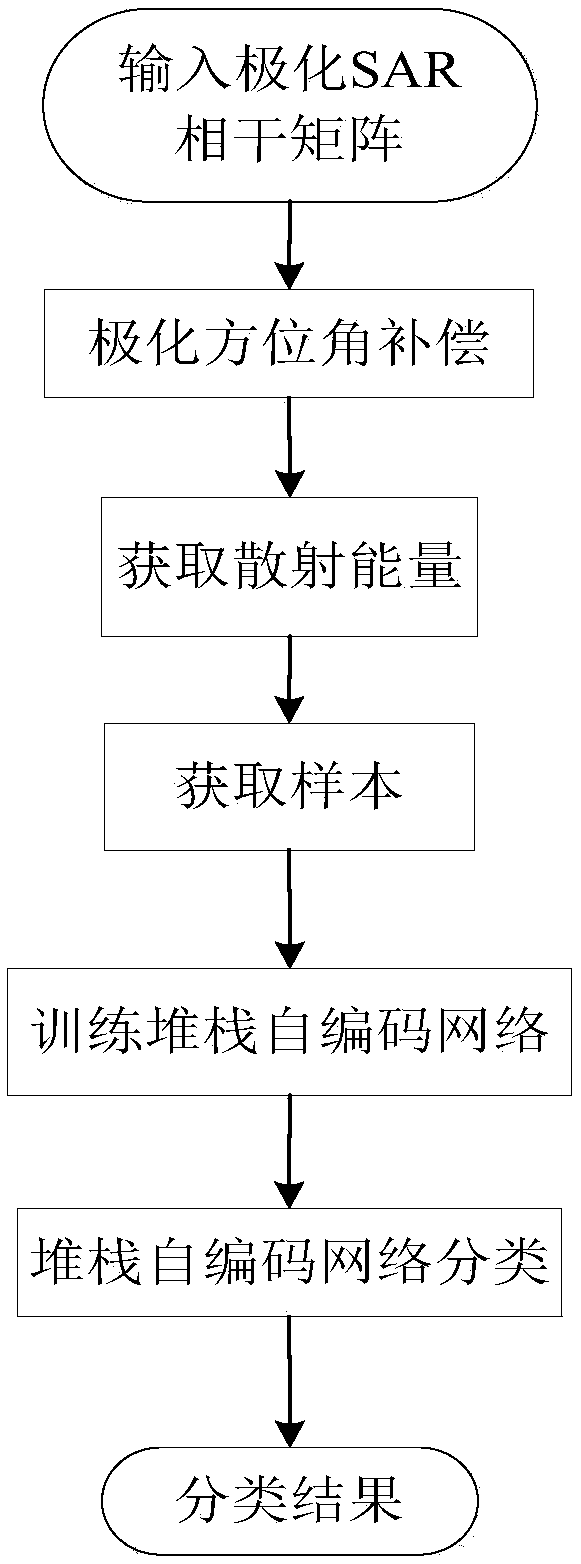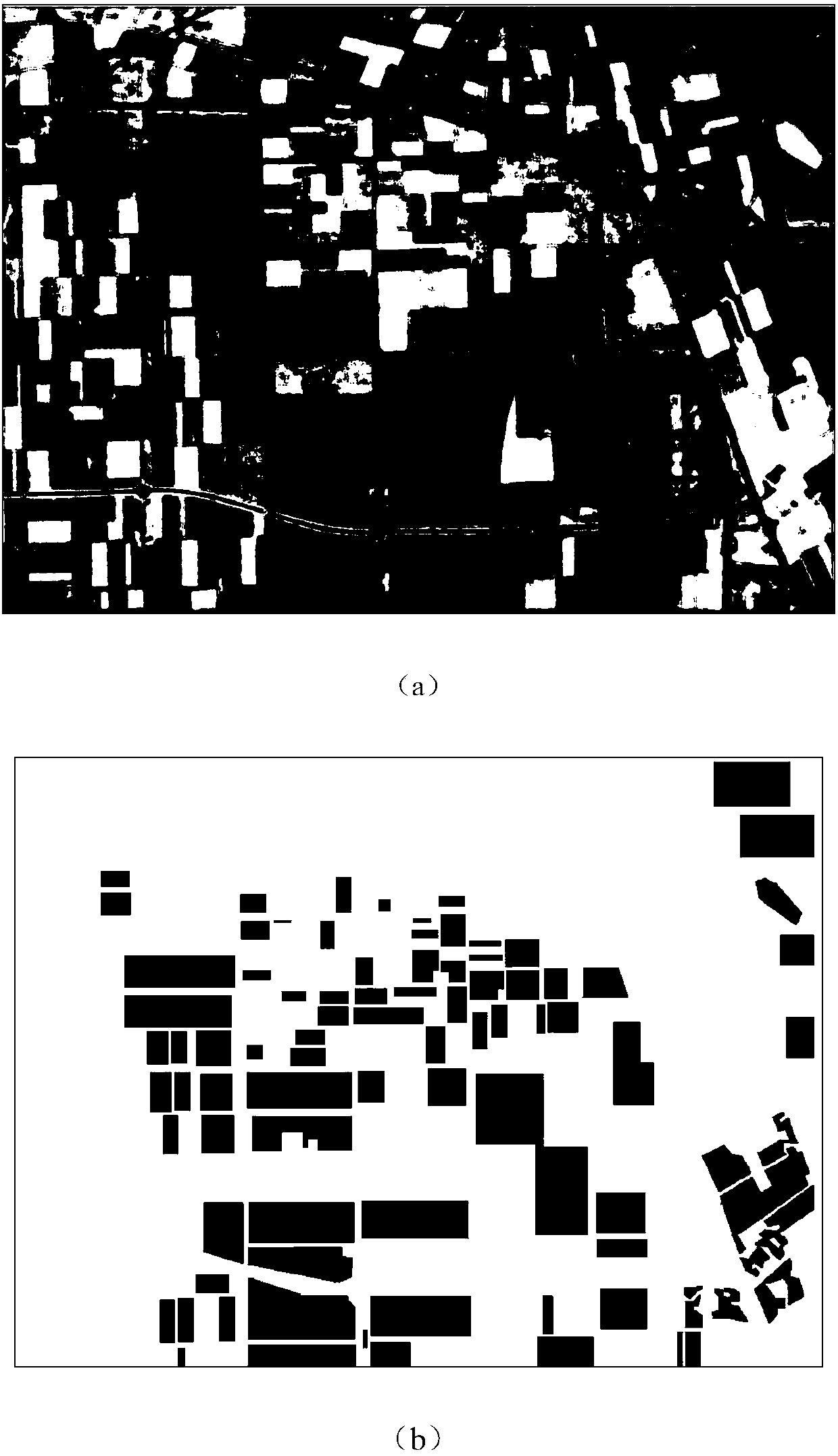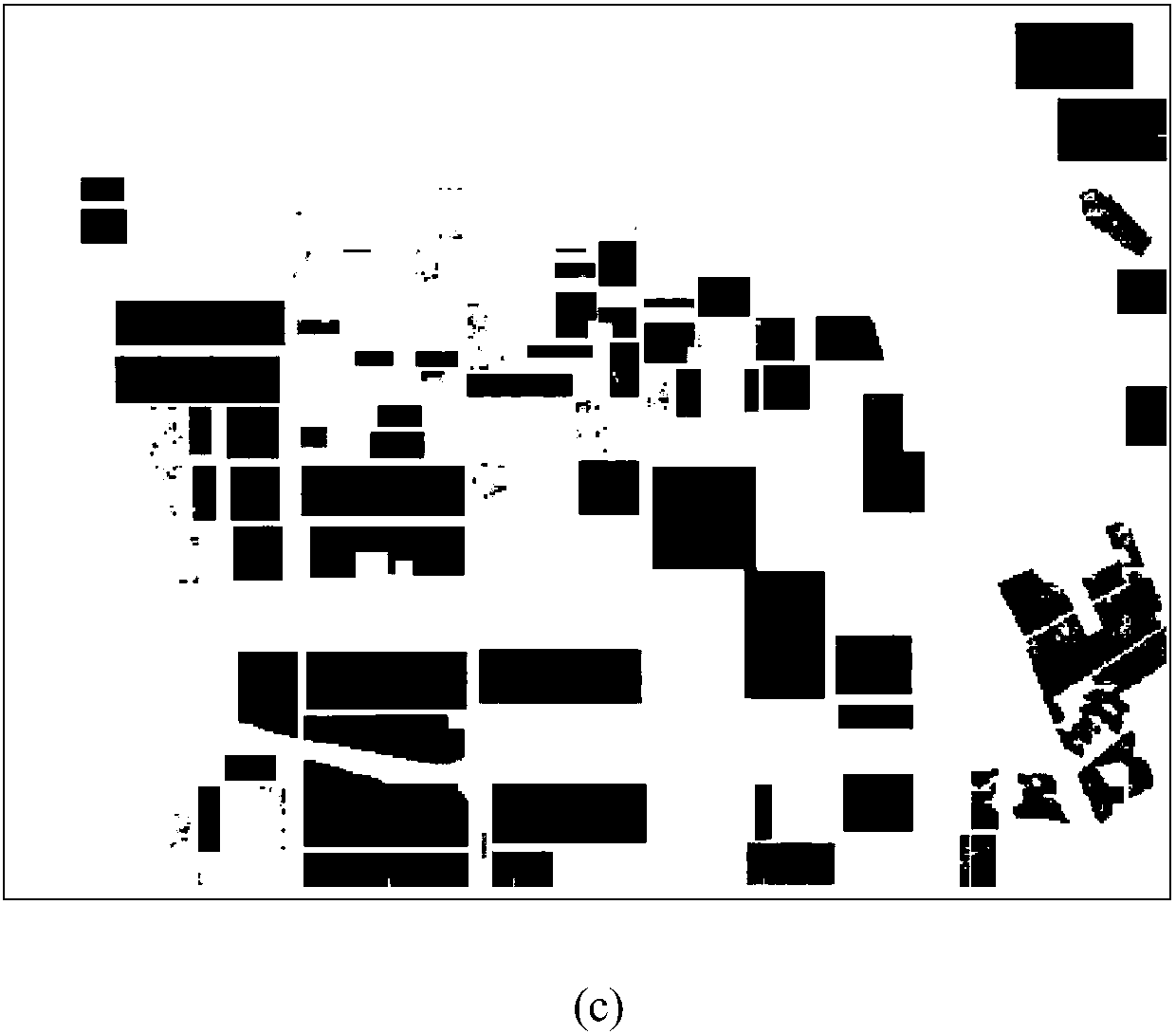Scattering energy and stack self-code-based polarimetric SAR image classification method
A classification method and self-encoding technology, applied in the field of image processing, can solve problems affecting the classification accuracy of polarization synthetic aperture radar SAR images and unreasonable feature extraction, so as to improve classification efficiency, overcome the decline of classification accuracy, and improve classification accuracy Effect
- Summary
- Abstract
- Description
- Claims
- Application Information
AI Technical Summary
Problems solved by technology
Method used
Image
Examples
Embodiment Construction
[0036] The present invention will be further described below in conjunction with the accompanying drawings.
[0037] refer to figure 1 , the concrete steps that the present invention realizes are as follows:
[0038] Step 1, input the coherence matrix of the polarimetric SAR SAR image to be classified.
[0039] Step 2, compensating the polarimetric SAR SAR coherence matrix.
[0040] Take the polarization azimuth angle for the polarization synthetic aperture radar SAR coherence matrix, use the polarization azimuth angle to calculate the rotation matrix of the polarization coherence matrix, use the rotation matrix to perform rotation transformation on the coherence matrix, and obtain the compensated polarization coherence matrix, the specific operation Proceed as follows:
[0041] The first step is to calculate the polarization azimuth angle of the polarization synthetic aperture radar SAR coherence matrix according to the following formula:
[0042]
[0043] Among them, ...
PUM
 Login to View More
Login to View More Abstract
Description
Claims
Application Information
 Login to View More
Login to View More - R&D
- Intellectual Property
- Life Sciences
- Materials
- Tech Scout
- Unparalleled Data Quality
- Higher Quality Content
- 60% Fewer Hallucinations
Browse by: Latest US Patents, China's latest patents, Technical Efficacy Thesaurus, Application Domain, Technology Topic, Popular Technical Reports.
© 2025 PatSnap. All rights reserved.Legal|Privacy policy|Modern Slavery Act Transparency Statement|Sitemap|About US| Contact US: help@patsnap.com



